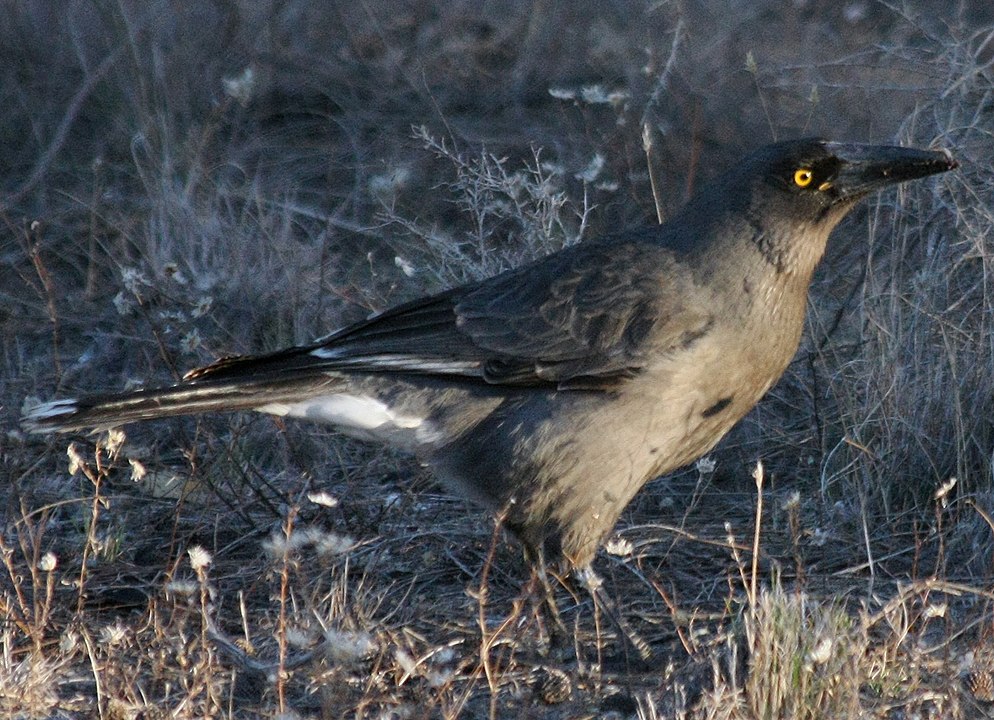Hampton Mallee and Woodlands
The ecoregion’s land area is provided in units of 1,000 hectares. The conservation target is the Global Safety Net (GSN1) area for the given ecoregion. The protection level indicates the percentage of the GSN goal that is currently protected on a scale of 0-10. N/A means data is not available at this time.
Bioregion: South Australian Mediterranean Forests, Woodlands & Scrub (AU5)
Realm: Australasia
Ecoregion Size (1000 ha):
1,091
Ecoregion ID:
201
Conservation Target:
86%
Protection Level:
2
States: Australia
The Hamptom mallee and woodlands occur on ancient marine dunes and sediments uplifted along the southern coast of Australia. Some of the dunes are stable while some are shifting. Mallee and short woodlands cover most of the landscape. The limestone bedrock is riddled with caves and sinkholes, particularly in areas such as the Eucla Basin. Several unique cave-dwelling invertebrates have evolved here.
Mallee shrublands of Eucalyptus diversifolia dominates the coastal escarpments. Eucalypt and myall woodlands and dune vegetation also occur here. Quandong, prickly wattle (Acacia paradoxa) and coastal white mallee (Eucalyptus diversifolia) are rare plants of the ecoregion. Coastal dunes support several endemic plant species, such as Scaevola crassifolia, Atriplex cinereal, and Euphorbia paralais. Typical dune reptiles include Pseudemoia baudini, Lerista arenicola, Ctenotus brooksi euclae, and L. baynesi. The grey currawong (Strepera versicolor), a rare crow of southern Australia, can also be found here.

The flagship species of the Hampton Mallee and Woodlands ecoregion is the grey currawong. Image credit: Chris Gregory, Creative Commons
The alien herbivores and predators common throughout Australia also occur here. Camels, feral horses, and rabbits, in particular, damage native vegetation. Commercial cattle and sheep grazing occurs over roughly half of the ecoregion. Where intensive it damages native vegetation and delicate soil crusts. Feral cats, dogs, and foxes prey on native wildlife. Weeds, such as the sea spurge (Euphorbia paralis) alter water and nutrient profiles, as well as outcompete native plant communities. Despite 15% of the ecoregion is in protected areas, including the Nuytsland Nature Reserve and Nullarbor National Park, additional, well-managed areas are required to protect the full range of habitat types.
Key conservation actions for the next decade are to: 1) activate effective rabbit, feral cat, and fox control programs; 2) expand the protected area network to encompass the ecoregion’s full range of distinct habitat types; and 3) strengthen protection of unusual cave habitats and faunas in karst areas.
Citations
- Australian Government. Hampton Bioregion. Accessed 1 June 2019 at https://www.environment.gov.au/system/files/resources/a8015c25-4aa2-4833-ad9c-e98d09e2ab52/files/bioregion-hampton.pdf
- Gifillan S et al. 2002. Hampton (HAM) in A Biodiversity Audit of Western Australia’s 53 Biogeographical Subregions. pp. 363-368.
- Keighery GJ, AC Robinson, BH Downing. 1987). Vegetation. Pages 39-101 in A Biological Survey of the Nullarbor Region, South and Western Australia in 1984. Department of Environment and Planning, Adelaide.



